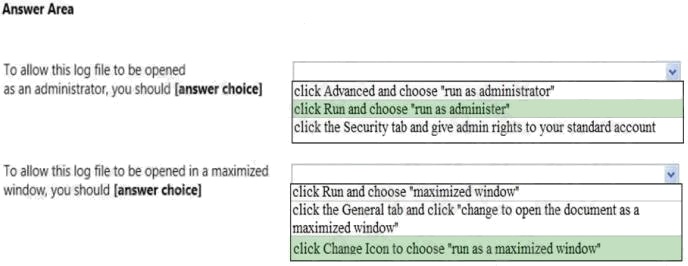microsoft 98-367 practice test
Security fundamentals
Question 1
What is a common method for password collection?
- A. Email attachments
- B. Back door intrusions
- C. SQL Injection
- D. Network sniffers
Answer:
D
Question 2
Which password attack uses all possible alpha numeric combinations?
- A. Social engineering
- B. Brute force attack
- C. Dictionary attack
- D. Rainbow table attack
Answer:
C
Question 3
Email spoofing:
- A. obscures the true email sender
- B. copies email messages sent from a specific user
- C. modifies email routing logs
- D. forwards email messages to all contacts
Answer:
A
Explanation:
References:
https://searchsecurity.techtarget.com/definition/email-spoofing
Question 4
What does NAT do?
- A. It encrypts and authenticates IP packets.
- B. It provides caching and reduces network traffic.
- C. It translates public IP addresses to private addresses and vice versa.
- D. It analyzes incoming and outgoing traffic packets.
Answer:
C
Explanation:
Reference: http://en.wikipedia.org/wiki/Network_address_translation
Question 5
The primary purpose of Network Access Protection (NAP) is to prevent:
- A. Loss of data from client computers on a network.
- B. Non-compliant systems from connecting to a network.
- C. Users on a network from installing software.
- D. Unauthorized users from accessing a network.
Answer:
B
Explanation:
NAP enforces health policies by inspecting and assessing the health of client computers, restricting network access when
client computers are noncompliant with health policy, and remediating noncompliant client computers to bring them into
compliance with health policy before they are granted full network access. NAP enforces health policies on client computers
that are attempting to connect to a network; NAP also provides ongoing health compliance enforcement while a client
computer is connected to a network.
Reference: http://technet.microsoft.com/en-us/library/cc754378(v=ws.10).aspx
Question 6
A mail system administrator scans for viruses in incoming emails to increase the speed of mail processing.
Select the correct answer if the underlined text does not make the statement correct. Select "No change is needed" if the
underlined text makes the statement correct.
- A. Decrease the chances of a virus getting to a client machine
- B. Verify that the senders of the messages are legitimate
- C. Ensure that all links in the messages are trustworthy
- D. No change is needed.
Answer:
A
Question 7
Which is a special folder permission?
- A. Read
- B. Modify
- C. Write
- D. Delete
Answer:
D
Explanation:
Reference: http://support.microsoft.com/kb/308419
Question 8
Which provides the highest level of security in a firewall?
- A. Stateful inspection
- B. Outbound packet filters
- C. Stateless inspection
- D. Inbound packet filters
Answer:
A
Question 9
HOTSPOT
You are helping your classmates with their password settings.
Instructions: For each of the following statements, select Yes if the statement is true. Otherwise, select No.
NOTE: Each correct selection is worth one point.
Hot Area: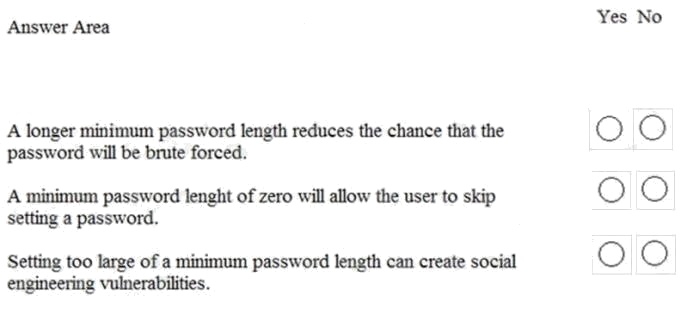
Answer:
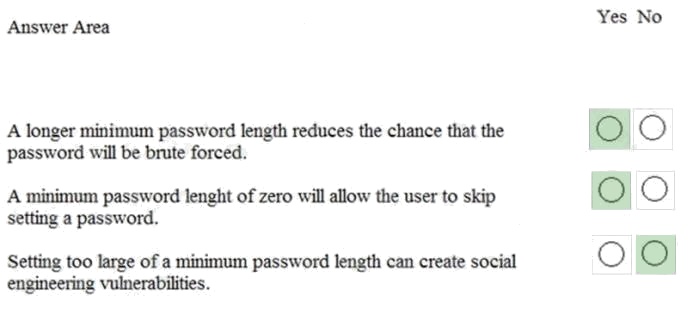
Explanation:
References:
https://docs.microsoft.com/en-us/windows/security/threat-protection/security-policy-settings/ minimum-password-length
Question 10
You have two servers that run Windows Server. All drives on both servers are formatted by using NTFS.
You move a file from one server to the other server. The file's permissions in the new location will:
- A. Enable full access to the everyone group
- B. Restrict access to the Administrators group
- C. Inherit the destination folder's permissions
- D. Retain the original folder's permissions
Answer:
C
Explanation:
You can modify how Windows Explorer handles permissions when objects are copied or moved to another NTFS volume.
When you copy or move an object to another volume, the object inherits the permissions of its new folder.
Question 11
Your password is 1Vu*cI!8sT.
Which attack method is your password vulnerable to?
- A. Rainbow table
- B. Brute force
- C. Spidering
- D. Dictionary
Answer:
A
Question 12
Shredding documents helps prevent:
- A. Man-in-the-middle attacks
- B. Social engineering
- C. File corruption
- D. Remote code execution
- E. Social networking
Answer:
B
Explanation:
Reference: http://technet.microsoft.com/en-us/library/cc875841.aspx
Question 13
Malicious software designed to collect personally identifiable information is referred to as :
- A. spyware
- B. a cookie
- C. a network sniffer
- D. freeware
Answer:
A
Question 14
The name of a particular wireless LAN that is broadcast on a network is referred to as a:
- A. MAC address
- B. Basis Service Set (BSS)
- C. Wireless Access Point (WAP)
- D. Service Set Identifier (SSID)
Answer:
D
Question 15
HOTSPOT You are at school and logged in to a Windows 7 computer using a standard user account.
You need to change some of the properties of a desktop icon for an assignment. Your instructor provides you with an
administrator username and password and asks you to do two tasks.
When you open the Need Admin Access Properties window, you see the following image: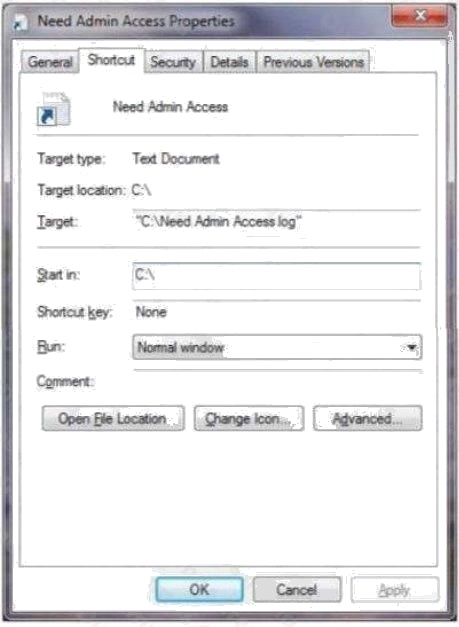
Use the drop-down menus to select the answer choice that completes each statement. Each correct selection is worth one
point.
Hot Area: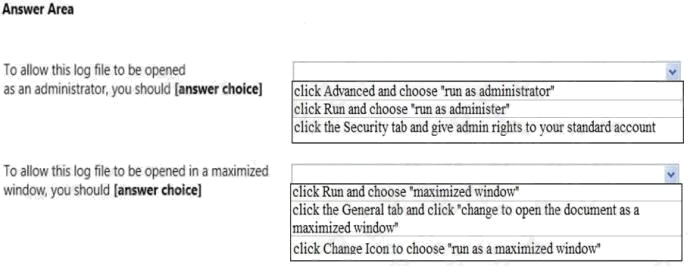
Answer:
